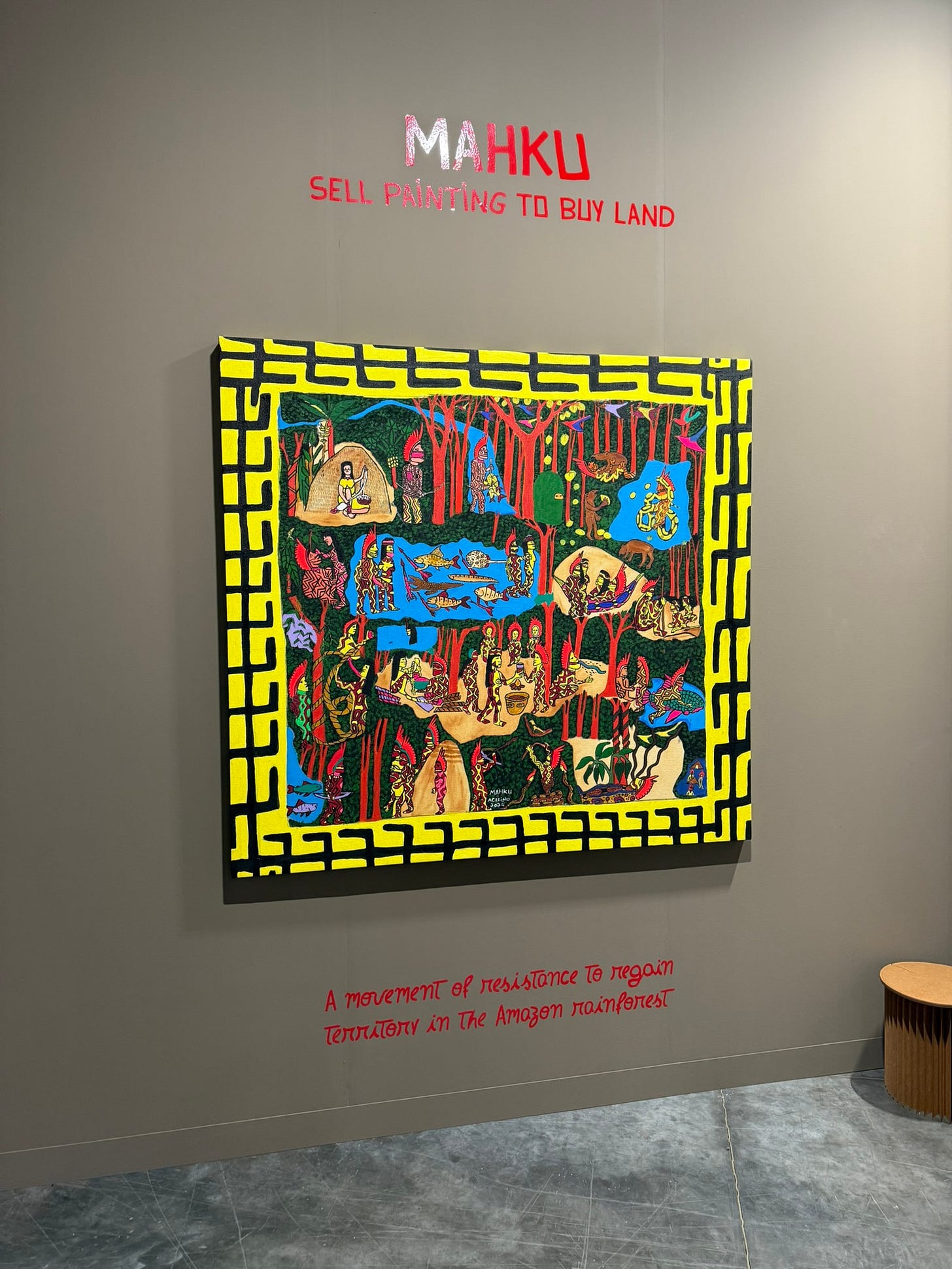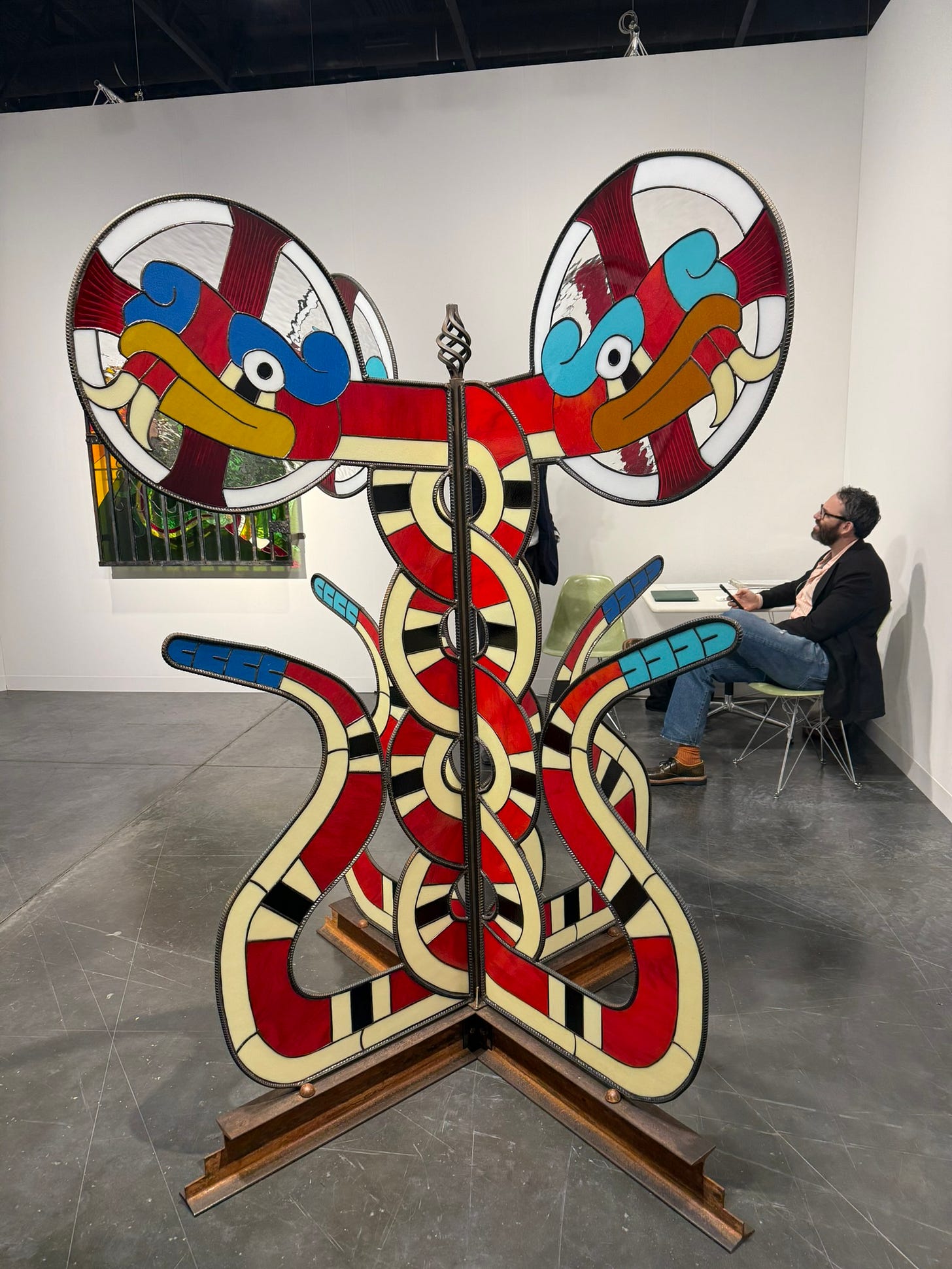Dispatches from Miami Part 2: Art Basel Miami Beach
Ross Karlan, Director of Art Muse LA and Miami
With over 250 booths, Art Basel Miami Beach is pure sensory overload. Amidst the labyrinth of galleries from around the world, I always find myself creating a weird mental map, wondering how many times I have to pass the Gagosian booth just to get to where I want to be, or using Ai Wei Wei’s “FUCK EM ALL” lego painting as a reference point to get back to some obscure gallery a friend told me to check out.
Nevertheless, there were some amazing gems this year, so within the chaos, here’s what I loved. Notably, the following choices were all part of the fair’s Positions section, focused on more emerging artists and galleries:
MAKHU at Carmo Johnson Projects:
São Paulo-based Carmo Johnson Projects presented the work of MAKHU, the “Movimento dos Artistas Huni Kuin,” from Acre, Brazil — the Amazon-region of northwestern Brazil on the Peruvian border. MAKHU made a splash this year at the Venice Biennale, and their movement is a celebration of indigenous culture and storytelling rooted in their Huni Kuin heritage. And, their art serves a mission to protect this heritage. With the sale of artworks, members of the MAKHU movement buy plots of land for their communities and aim to protect their practices including Ayahuasca. Not to mention, the work is gorgeous.
Timo Fahler at Sebastian Gladstone:
Tulsa, Oklahoma-born Timo Fahler’s presentation at Sebastian Gladstone’s booth was truly unique because of its merging of so many cultural and artistic practices. Fahler’s stained glass and rebar sculptures were a perfect blend of Western architectural tradition — calling to mind stained glass cathedral windows — with indigenous, here Mesoamerican, stories and mythologies. The work was such a statement of what is possible when an artist rethinks the relationship between visual narrative and materials, displacing one cultural tradition with another.
Julieta Tarraubella at Rolf Art
Buenos Aires gallery Rolf Art presented the stunning video-installation work of Julieta Tarraubella. What initially appears to be a series of iPads fixed to the wall slowly reveals itself to be a well thought out story of life and death, specifically of a flower. On the left side of the booth, a lily was recorded by three different cameras. This, according to the gallerist, was a demonstration of Tarraubella’s process, recording, and subsequently speeding up, the life cycle of a flower. However, for me, the genius was the reconstruction of that flower digitally, where the wires recalled the stems, and each screen showed a perspective of the petals. It looked like a dystopian garden, though it was so beautiful to see.










